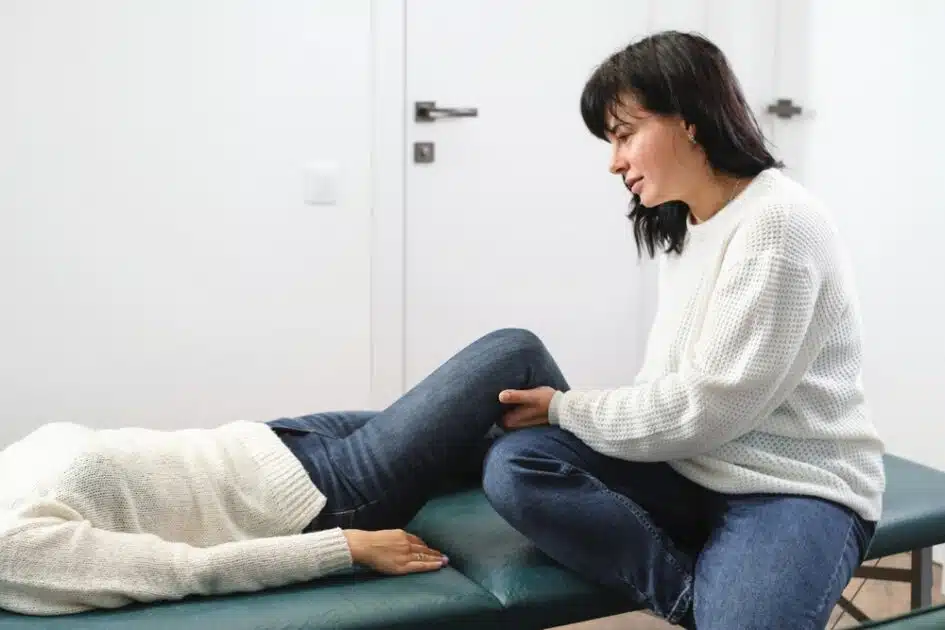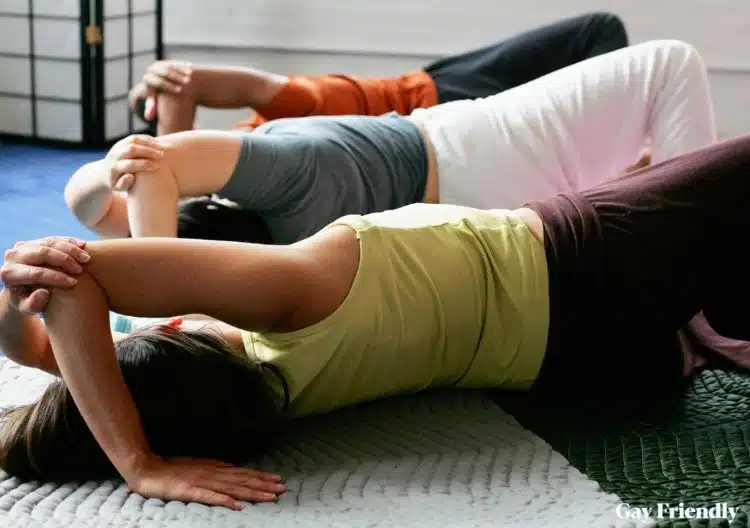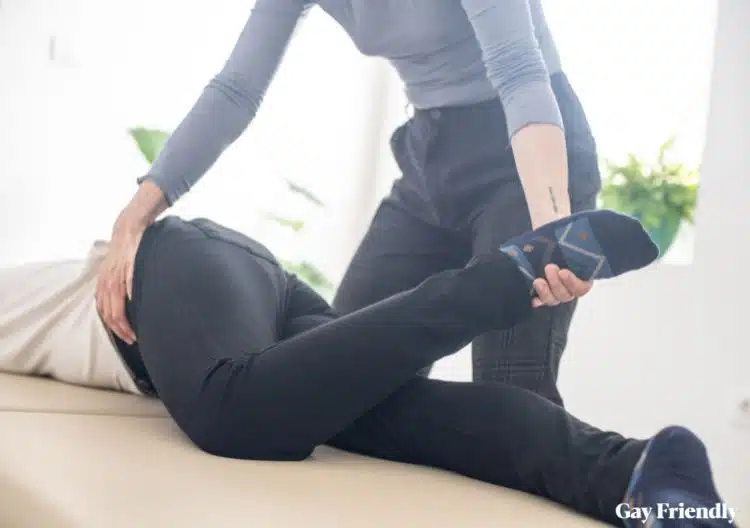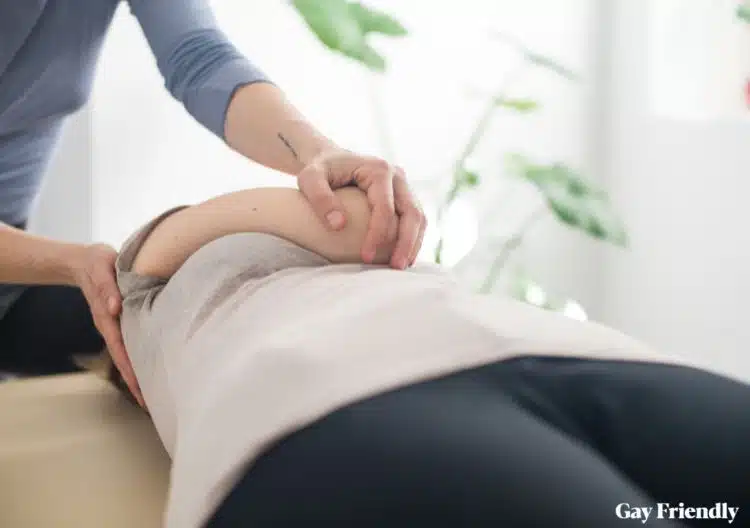How does the Feldenkrais Method differ from Massage?

Unlocking Body Awareness: The Feldenkrais Journey to Efficient Movement and Holistic Well-being
What is Massage 06th Aug, 2023
Massage therapy involves the manual manipulation of muscles and soft tissues in order to relieve stress and promote healing.

It delivers quick, symptom-focused comfort but does not always address the underlying causes of the symptoms.
The Feldenkrais Method, on the other hand, improves body awareness and functionality via slow, focused movements. It is a method of active learning that promotes long-term change by retraining the brain’s control over movement patterns, resulting in increased well-being and general functionality.
The Aim of the Feldenkrais Method
The primary goal of the Feldenkrais Method is to increase an individual’s self-awareness and movement efficiency. Rather than dictating “correct” posture or motions, this method enables people to experiment with different ways of moving to find out what works best for them. It is about becoming more aware of one’s own body, detecting harmful or inefficient movement patterns, and learning new, more effective ways to move.
The ultimate objective is to help people move more easily and fluidly, to minimize discomfort, to improve physical performance, and to promote general well-being. The Method does this by utilizing the brain’s plasticity, or its capacity to build new neural connections throughout life.
Benefits of the Feldenkrais Method
The Feldenkrais Method, an innovative approach to human movement, learning, and change, brings about numerous benefits, spanning from physical wellness to mental health improvements.

1. Enhanced Movement Efficiency
The Feldenkrais Method helps you develop a better understanding of your movement patterns, enabling you to identify and remove inefficient habits. This leads to smoother, more fluid, and efficient movements, positively affecting your overall physical performance whether in daily activities, sports, or artistic pursuits.
2. Reduced Pain
By fostering better movement habits and postures, the Feldenkrais Method can help alleviate chronic and acute pain. This can include pain related to repetitive strain injuries, arthritis, musculoskeletal problems, or neurological conditions.
3. Improved Flexibility and Balance
Regular Feldenkrais sessions can lead to improved flexibility and balance, as the method encourages your body to move in new and varied ways. This can enhance your coordination, agility, and stability, reducing the risk of falls and injuries.
4. Heightened Body Awareness
Feldenkrais promotes a heightened sense of body awareness, helping you to tune into your body’s needs and responses.
5. Stress Reduction and Relaxation
The gentle, mindful movements involved in Feldenkrais can be deeply relaxing, helping to alleviate stress and anxiety. By focusing on the present moment and your physical sensations, you can experience a state of calm and centeredness.
6. Enhanced Neuroplasticity
The Feldenkrais Method taps into the brain’s neuroplasticity – its ability to form and reorganize synaptic connections in response to learning and experience. This process can potentially help in the recovery and rehabilitation from neurological conditions and injuries.
7. Improved Posture
As you become more aware of how you hold and move your body, you can begin to improve your posture. This can further contribute to reduced pain, better respiratory function, and an overall sense of increased well-being.
In sum, the Feldenkrais Method offers a holistic approach to wellness, seeking to enhance your life quality by empowering you to move more freely, efficiently, and comfortably.
Recommended:
Russian Massage: Unusual Techniques for Healing and Relaxation
Techniques in the Feldenkrais Method

The Feldenkrais Method is rooted in two core techniques, designed to enhance self-awareness and improve movement efficiency. These two techniques are called Awareness Through Movement (ATM) and Functional Integration (FI).
1. Awareness Through Movement (ATM)
Awareness Through Movement classes are typically group sessions that use verbal instruction to guide participants through a sequence of movements. Each ATM lesson focuses on a particular function or region of the body, exploring diverse ways of moving to improve body awareness, enhance flexibility, and reduce unnecessary muscular effort.
The classes generally involve:
- Slow, mindful movements: The participants are encouraged to perform each movement slowly and mindfully, focusing on the sensation of movement and their body’s responses.
- Gentle, non-strenuous actions: The movements are designed to be gentle and non-strenuous, suitable for individuals of all ages and levels of physical ability.
- Variation and exploration: Rather than prescribing a “correct” way to move, ATM encourages the exploration of different movement options, allowing participants to discover what feels most efficient and comfortable for them.
- Rest periods: Rest periods are interspersed throughout the class to allow the brain to process new information and integrate new movement patterns.
2. Functional Integration (FI)
Functional Integration classes are one-on-one sessions that are adapted to the needs and conditions of the person. Unlike group ATM sessions, FI is a hands-on experience with a Feldenkrais practitioner.
Key elements of FI sessions include:
- Gentle touch and movement: The practitioner uses a gentle touch and slow, careful movements to guide the individual’s body. This non-invasive touch can help the individual sense and explore new ways of moving.
- Individualized approach: The practitioner designs each session based on the individual’s unique movement habits, physical condition, and learning needs. The goal is to facilitate individual learning and discovery.
- Interactive dialogue: Throughout the session, the practitioner and individual engage in a continuous, non-verbal dialogue through touch and movement. This dialogue helps the practitioner understand the individual’s needs and helps the individual integrate new movement possibilities.
Through conscious inquiry and discovery, ATM and FI both seek to promote a feeling of embodied learning, boosting self-awareness and improving movement efficiency. These approaches’ ultimate purpose is to assist people to move with more ease and fluidity, improve their general physical function, and increase their quality of life.
Differences between Massage Therapy and the Feldenkrais Method
1. Primary Focus
Massage therapy is primarily concerned with the physical manipulation of the body’s soft tissues. Massage therapists use pressure and muscle manipulation to treat tension, and discomfort, and induce relaxation.
The Feldenkrais Method, on the other hand, focuses on brain reprogramming, directly addressing the neurological system to effect transformation. Feldenkrais practitioners, rather than physically manipulating the body, assist clients in changing their movement patterns by developing new neural connections in the brain.
This method makes use of the brain’s plasticity, or its natural ability to alter and adapt, to improve movement efficiency and general body performance.
2. The Process
The client is mostly passive during a regular massage treatment session. They unwind and allow the therapist to operate on their body, reaping the advantages of the therapy without actively participating in it.
The Feldenkrais Method, on the other hand, necessitates the individual’s direct participation. Individuals are constantly involved in a process of learning and discovery, whether through guided movement explorations in Awareness Through Movement workshops or participatory, hands-on sessions in Functional Integration.
The Feldenkrais Method focuses on self-awareness and self-regulation, with the individual actively discovering new ways to move and sense their body.
3. The Goal
Massage treatment is frequently used to provide rapid relief from bodily discomforts such muscular tension, stiffness, and pain.
It can provide momentary relaxation and discomfort alleviation, but it seldom addresses long-term movement habits or patterns that may be contributing to these problems. The Feldenkrais Method, on the other hand, seeks to effect long-term improvements in how people move and operate.
The Feldenkrais Method strives to improve general physical function, alleviate pain, and promote well-being in a sustainable manner by assisting individuals in discovering more efficient and pleasant ways of movement.
4. Individual Roles
In massage therapy, the client takes on the role of a recipient, receiving the therapeutic benefits of the therapist’s skilled touch.
The therapist is the active provider of the treatment, while the client is primarily a passive receiver. However, the Feldenkrais Method considers the individual to be an active participant in their own learning and growth process. The practitioner serves as a facilitator or guide, assisting the person in exploring their movement patterns and discovering new possibilities.
The individual actively participates in perceiving, investigating, and integrating new ways of movement, therefore taking responsibility of their own development and well-being.
When to Use Massage Therapy or the Feldenkrais Method

Understanding the settings and situations for which either method—massage therapy or the Feldenkrais Method—is most suited might help you make an educated choice.
Suitable Scenarios for Massage Therapy
Massage therapy may be a beneficial choice in the following situations:
- Immediate Stress Relief
Massage therapy can be highly effective for immediate relaxation and stress relief. The soothing touch of a massage therapist can help to calm the nervous system, reducing stress hormones and inducing a state of relaxation. - Acute Muscle Tension or Pain
If you’re suffering from muscle stiffness, tension, or pain, especially after intense physical activity or a long day of work, a massage can provide immediate relief. The therapist’s skilled manipulation of soft tissues can help alleviate muscle soreness and promote recovery. - Injury Recovery
Massage therapy can also be helpful as part of a comprehensive recovery plan for certain injuries, particularly those related to muscles, ligaments, and tendons. It can promote circulation to the injured area, helping to speed up healing and reduce inflammation. - Pre- or Post-Exercise
Athletes often use massage therapy as a pre-exercise warm-up or post-exercise recovery technique. It can help prepare the muscles for intense activity, as well as assist in flushing out lactic acid and other waste products after exercise.
Suitable Scenarios for the Feldenkrais Method
The Feldenkrais Method can be particularly suitable in the following circumstances:
- Chronic Pain Management
If you are dealing with chronic pain, especially pain related to inefficient movement patterns or posture, the Feldenkrais Method can help. It’s aimed at teaching you to move in a more balanced and efficient way, which can reduce strain and alleviate chronic pain. - Improving Movement Efficiency
The Feldenkrais Method is an excellent choice for anyone seeking to improve their movement efficiency—be it for daily activities, sports performance, or artistic pursuits. It can help you identify and eliminate inefficient movement habits, leading to improved performance and reduced risk of injury. - Rehabilitation from Injury or Surgery
If you’re recovering from an injury or surgery, especially those affecting your ability to move, the Feldenkrais Method can assist in your rehabilitation process. By promoting optimal movement patterns, it can support functional recovery and prevent compensatory habits that could lead to further issues. - Neurological Conditions
For individuals dealing with neurological conditions like stroke, multiple sclerosis, or cerebral palsy, the Feldenkrais Method can be beneficial. It leverages the brain’s neuroplasticity to facilitate the learning of new, more efficient movement patterns, potentially enhancing mobility and independence.
Remember that these are broad circumstances and that individual experiences may differ. Always seek the advice of a healthcare expert to decide the best strategy for your unique circumstance and needs.
Recommended:
Watsu Massage
The Bottom Line
Massage treatment and the Feldenkrais Method both have distinct advantages that can considerably improve one’s health and well-being. The decision should be based on the individual’s requirements, preferences, and intended goals.
Massage treatment may be the best option for people seeking quick relief from physical discomfort or a momentary escape from the demands of daily life. Its real and often immediate advantages can provide relief to fatigued muscles and a tired mind.
If the aim is to treat long-term movement patterns, persistent discomforts, or obstacles caused by neurological abnormalities, the Feldenkrais Method may provide more meaningful and long-term benefits. It’s an invitation to go on a path of self-discovery, knowing one’s body, and creating long-term changes that manifest in daily life and activities.
FAQs
What is the difference between Feldenkrais and Pilates?
While both Feldenkrais and Pilates aim to improve body awareness and movement, they differ in their approach. Pilates focuses on strengthening the core and improving posture through a series of exercises, while Feldenkrais emphasizes learning to move more efficiently and comfortably, using gentle movements and focused awareness.
What is the difference between Feldenkrais and yoga?
Yoga often involves holding poses and emphasizes flexibility and strength. Feldenkrais, on the other hand, involves gentle, exploratory movements with the goal of enhancing body awareness and promoting efficient movement patterns.
What are Feldenkrais fundamentals?
Feldenkrais fundamentals revolve around improving self-awareness through movement, enhancing movement efficiency, and leveraging the brain’s neuroplasticity for movement reeducation. The goal is to promote better movement and function, reduce pain, and increase overall well-being.
Can Feldenkrais help with back pain?
Yes, the Feldenkrais Method can be beneficial for individuals experiencing back pain. By teaching more efficient movement habits and promoting better posture, it can help reduce strain on the back, potentially alleviating pain.
Is Feldenkrais good for arthritis?
Feldenkrais can be a useful tool for managing arthritis symptoms. It encourages gentle, efficient movements that can help reduce joint strain and improve mobility, potentially easing discomfort associated with arthritis. As always, it’s essential to consult a healthcare professional before starting any new treatment regimen.
















